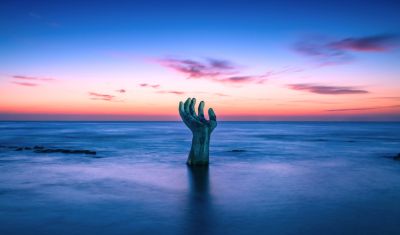

Discover the significant historical landmark, Pohang Revolutionary Site, where visitors can learn about North Korea's revolutionary history against Japanese colonial rule. The site is comprised of several monuments and displays that depict various events from the country's struggle for independence. While touring the site, visitors are often accompanied by local guides who narrate the tales associated with each monument and offer insights into the country's proud revolutionary past. This immersive experience provides a unique understanding of North Korea's political and historical context, allowing visitors to delve into the local culture's deep roots. It's important to note that all interactions and the information presented is consistent with the state-sanctioned version of historical events, reflecting North Korea's perspectives on its history and governance.
The Susongchon River is a tranquil spot in Chongjin for locals and visitors alike. A gentle stroll along its banks provides a sense of escape from the busy city life and offers a glimpse into everyday activities in North Korea. Along the way, one may observe people engaging in recreational fishing, enjoying picnics, or simply relaxing beside the river. This scenic walk presents an opportunity to appreciate the more serene aspects of North Korean life and to capture some scenic photographs. However, it is important to remember that photography in North Korea is subject to strict rules, and one must seek permission from their tour guide before taking any pictures to avoid any misunderstanding.
The Chongjin City Museum is a cultural attraction that provides an educational journey through the region's history, art, and natural sciences. Visitors can browse through various exhibits detailing the city's development, regional artifacts, and displays of North Korea’s local flora and fauna. The museum is an ideal place for history buffs and anyone interested to learn about Chongjin's past, from its prehistory to its industrial achievements. Guides often lead the tours, providing explanations of the exhibits, rounding out the educational experience. The museum visit may also include some propaganda elements characteristic of cultural institutions in North Korea.
The Chongjin Grand Theatre is one of the city's premier venues for performing arts, where visitors can enjoy traditional Korean music, dance, and theater productions. The performances showcase the artistic talents of North Koreans and offer a deep dive into the nation's rich cultural heritage. Amid grandiose architecture and lavish interior decor, attendees will experience the formal side of North Korean culture. Due to the infrequent scheduling and requisite permissions required for tourists to attend performances, interested visitors should arrange attendance well in advance with a sanctioned tour company.
Sunam Hill in Chongjin provides a great hiking opportunity for visitors. With gentle slopes and well-maintained paths, the hill offers fair accessibility for most fitness levels. At the summit, you are rewarded with a panoramic view of Chongjin city and the surrounding area, making it an excellent spot for photography and contemplation. Along the hike, visitors will also encounter monuments and statues that emphasize the revolutionary history of North Korea. Tourists should always be accompanied by their guide and remain on the approved pathways during their excursion.
The Chongjin Seamen's Club is a unique establishment originally intended to service foreign seafarers, but it is also open to tourists. The club offers recreational facilities such as billiards, ping-pong, and satellite TV, which is rare in North Korea. It allows visitors a rare opportunity to interact with local workers and experience a casual setting which may reveal a more personal side of North Korean life. However, interactions are usually monitored, and conversations are often limited to safe topics. This locale is also known for serving seafood dishes, with freshly caught fare from the nearby waters.
North Korea takes pride in its industrial capacity, and visiting the Chongjin Metal Factory offers insight into the country's metal industry. Overseen by a guide, visitors will be shown around parts of the factory, where they can observe the industrial processes and the workers at their tasks. Please note, photography is strictly prohibited on the premises without express permission, and visitors are only shown a curated part of the facility. This controlled visit can provide an understanding of the heavy industries that are central to North Korea's economy and, by extension, their national identity.
The Chongjin Foreign Language Bookshop is a spot for those interested in North Korean literature and propaganda materials, offering an array of books, postcards, and posters, primarily in Korean, but also in limited other languages. The materials provide a fascinating look into the government's narratives and ideals. The bookshop is a worthwhile experience for visitors to acquire unique souvenirs and to engage with North Korean literature and propaganda art forms from an educational perspective.
Located in Chongjin, the North Hamgyong Provincial Revolutionary Museum is dedicated to the revolutionary history of the region. It emphasizes the anti-Japanese resistance movements and the activities of the Workers’ Party of Korea in the area. As with many museums in North Korea, one can expect a narrative that adheres to the state-sanctioned version of history. A guided tour here offers an overview of the province’s contributions to the revolutionary movement and provides an opportunity to see historic artifacts and documents. Tours are typically conducted by knowledgeable guides who explain the significance and context behind the exhibits.
For a genuine North Korean shopping experience, visiting Chongjin's Central Market could be enlightening. It's one of the few places where tourists might be allowed to observe the local trading and bargaining activities. The market offers a variety of goods ranging from food, clothing, electronics, and household items. Visitors can observe everyday life and potentially engage with local vendors. However, due to the sensitive nature of interacting with the locals, and the government's cautious stance towards foreigners, activities within the market may be limited, and tourists should always follow their guide's instructions regarding conduct and purchases.
